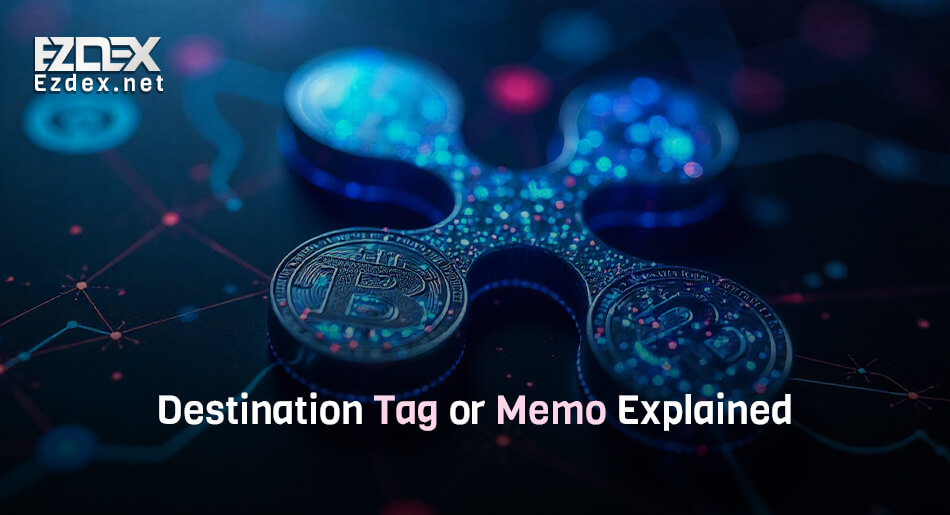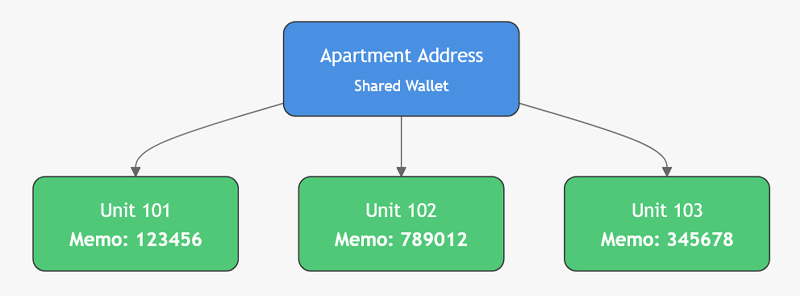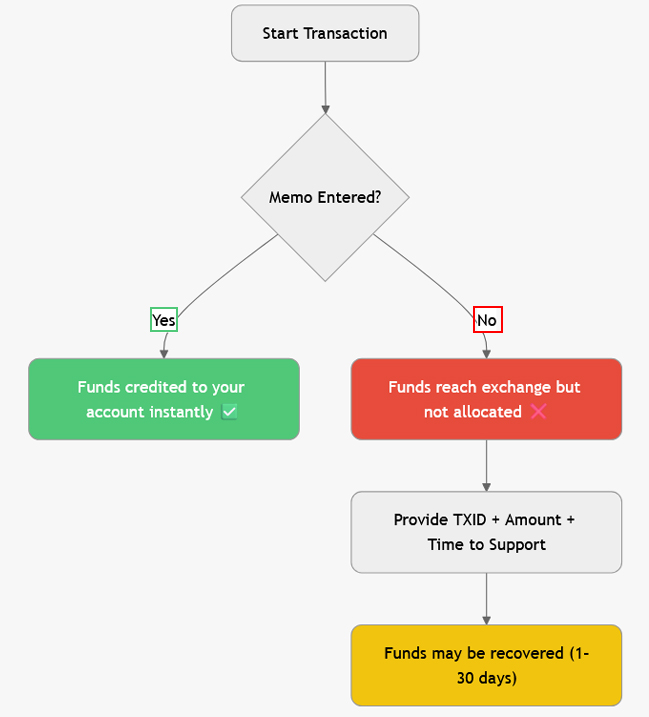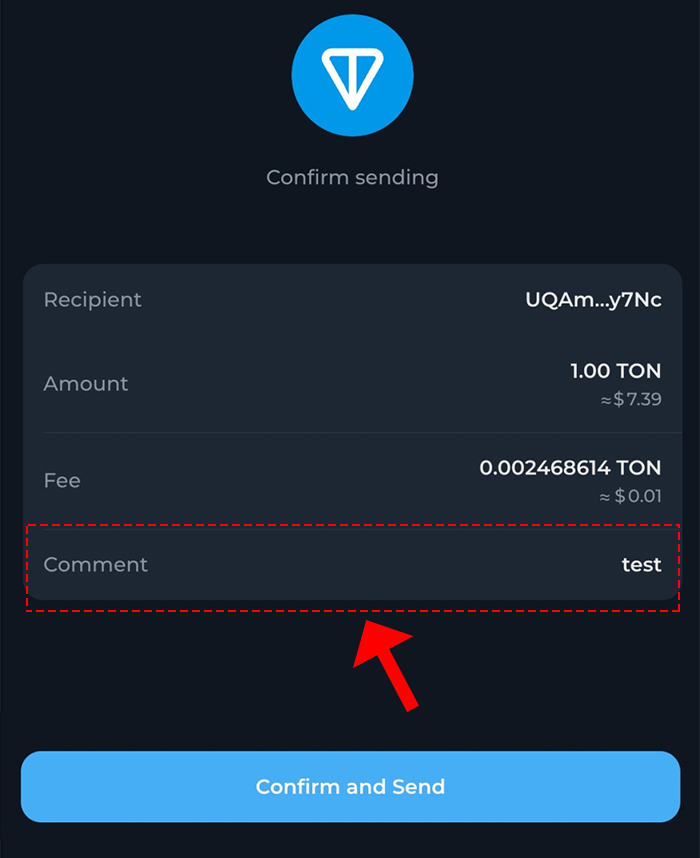What Is Memo, Tag, or Comment? Guide to Using Them in Crypto Transactions

A “Memo”, “Tag”, or “Comment” acts as an additional identifier alongside a wallet address. This concept plays a vital role, especially in centralized exchanges and certain blockchains, and can prevent assets from being lost. In this article, we explain the concept of a tag in cryptocurrency transactions and how to use it in simple terms.
Table of Contents
What Is Memo or Tag?
A memo or tag, which in some networks and wallets is also called a comment, is a unique identifier used as additional information in cryptocurrency transactions.
This identifier usually appears as a string of numbers, letters, or a combination of both (such as 123456 or ABC123) and is shorter than a wallet address.
In fact, the memo acts like an “apartment number or unit,” while the wallet address is the “building address.” Without it, the transaction may not reach its destination or may be assigned to the wrong account.

In some wallets or exchanges, the memo appears under different names such as “Destination Tag,” “Comment,” or “Memo ID,” but they all serve the same purpose: to precisely identify the recipient when a wallet address is shared among multiple users.
Shared wallets are commonly used in centralized exchanges like Binance and KuCoin to reduce costs.
The main difference between a memo and a wallet address is that the address specifies the general destination, while the memo adds the detailed information (such as a specific user account). In blockchains like Ripple, a “tag” is used, while in Stellar and EOS, “memo” is more common — but both mean the same thing.
Uses of Memo in Blockchain
Memos or tags have various uses in the cryptocurrency ecosystem, mainly based on security and efficiency:
- Differentiating cryptocurrency transactions: As mentioned, in centralized exchanges that use shared wallet addresses for multiple users, the memo separates transactions from one another and allocates funds to the correct account.
- Reducing costs: In networks like Ripple (XRP) and Stellar (XLM), creating a new address is costly. For example, the Ripple network requires a reserve of at least 20 XRP for each address. Therefore, exchanges use shared addresses and allocate assets to users through memos.
- Messaging and note-taking: In cryptocurrencies such as EOS, a memo allows users to add a message (like “for product purchase”) to a transaction, similar to the note section in bank transfers.
- Enhancing security and traceability: A memo adds an extra security layer and makes tracking transactions easier. In case of issues, by providing the transaction hash (TxID) and memo, exchange support can assist.
- Management in custodial wallets: In wallets like Tonkeeper, the memo appears as a “comment” and is required for certain transactions.
The memo is a tool to optimize transactions in shared environments, and without it, the risk of losing assets increases.
Transaction Flow with and without Memo when it is mandatory:

Which Cryptocurrencies Require a Tag or Memo?
Not all cryptocurrencies require a memo; this feature is mainly necessary on certain blockchains and centralized exchanges. The following table lists the main cryptocurrencies that require a memo or tag during transactions, along with their format:
| Cryptocurrency | Memo/Tag Name | Memo Format |
| Ripple (XRP) | Destination Tag | Numbers only |
| Stellar (XLM) | Memo Tag | Letters and/or numbers |
| EOS | Memo | Numbers only |
| Cosmos (ATOM) | Memo Tag | Numbers only |
| Hedera (HBAR) | Memo Tag | Letters and/or numbers |
| Stacks (STX) | Memo Tag | Letters and/or numbers |
| Toncoin (TON) | Comment (Memo) | Letters and/or numbers |
| Notcoin (NOT) | Comment (Memo) | Letters and/or numbers |
| Luna Classic (LUNC) | Memo | Numbers only |
This list has been compiled from various sources and may differ depending on the exchange. Therefore, when making cryptocurrency transactions, you should always check whether the destination requires a memo.
If for any reason you forget to enter a tag or comment, you can recover your funds using the guide for recovering mistakenly sent cryptocurrency.
How to Use a Memo in a Cryptocurrency Transaction
If the cryptocurrency or platform you are using requires a tag, you need to know how to use it. In fact, using a memo is simple, but it requires attention. The general steps are explained below:
- Receive the memo from the destination: You must always obtain the tag, memo, or comment from the destination. Log in to your exchange account, go to the “Deposit” section, and select the desired cryptocurrency (such as XRP). The wallet address and memo (in a separate field) will be displayed. Copy both.
- Enter it in the sending wallet: You must always enter the tag, memo, or comment in the sending wallet. In your wallet (such as Trust Wallet or Atomic), tap “Send.” Enter the destination address in the “Address” field and the memo in the “Memo/Tag/Comment” field. Specify the amount and confirm the transaction.
- Final check: Before confirming, double-check the address, memo, and network.
Practical Example
Transferring Toncoin to Binance from the Tonkeeper wallet: get the memo (ABC123) from Binance and enter it in the Toncoin sending section of the Tonkeeper wallet as shown below.

If after sending you realize that the tag was entered incorrectly or not entered at all, you must send the transaction ID to the destination’s support team to recover your assets.
Important Notes
To avoid problems in your cryptocurrency transfers, always keep the following in mind:
- A memo or tag is a simple tool that prevents asset loss in shared environments.
- Memos are only required for certain cryptocurrencies and centralized exchanges; in personal wallets like Trust Wallet, “No Memo Required” is usually displayed, and there’s no need to enter one.
- Memo, tag, and comment are the same; some wallets may use different names for this field. For example, in Tonkeeper, the field appears as “Comment.”
- Without entering a memo, the cryptocurrency will reach the exchange but will not be credited to your account. A wrong memo may send funds to another account and be irreversible. Exchanges are not obligated to compensate, but they usually cooperate and return the assets to you. However, the recovery process can take time.
- Always copy and paste the tag — do not type it manually. Match the source and destination networks. In case of problems, provide the transaction hash, time, and transferred amount to support.
Read the latest news and announcements in this section.
Read the latest tutorials about payment service providers in this section.
You can access full guides and tutorial to use EZDEX services in this section.
Step by step tutorials and photo guides are available in this section.
Access the latest information about financial and economical matters in Turkey in this section.
Access the latest information about financial and economical matters in UAE in this section.
Explore expert guides, tips, and strategies for understanding and working with gold. Learn everything from basics to advanced knowledge.